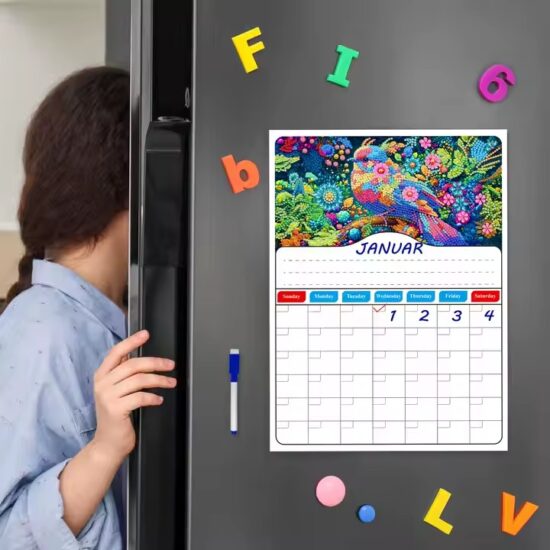bob@nbdho.com
How to Design a Practical and Attractive Magnetic Calendar
How to Design a Practical and Attractive Magnetic Calendar
Magnetic calendars are popular tools for both personal use and corporate branding. Designing a magnetic calendar that is practical and attractive requires a careful balance of usability, aesthetics, and customization options. Whether you’re a manufacturer, wholesaler, or business looking to create custom magnetic calendars, this guide provides essential tips to help you design an effective product.
1. Understand the User’s Needs
Begin by identifying the target audience and their specific requirements. For example, families might prefer calendars with large date blocks and space for notes, while corporate clients may want sleek designs featuring their logos and brand colors. Tailoring the calendar’s layout and features to the user’s lifestyle or business goals is key to its practicality.
2. Choose the Right Size and Format
Magnetic calendars come in various sizes and formats, such as single-sheet, multi-month, or foldable designs. Select a size that fits common magnetic surfaces like refrigerators or office whiteboards while ensuring readability. Consider formats that allow for easy flipping or page tearing if the calendar covers multiple months.
3. Use High-Quality Materials
The calendar’s durability depends on the materials used. Opt for strong magnetic backings that adhere well to metal surfaces, paired with high-quality paper or synthetic printing surfaces. Protective coatings like lamination or UV varnish can enhance longevity and resist wear and tear.
4. Prioritize Clear and Readable Layouts
A practical calendar must be easy to read at a glance. Use legible fonts and sufficient spacing between dates. Highlight weekends and holidays with contrasting colors to improve usability. Including sections for notes, reminders, or to-do lists can increase functionality.
5. Incorporate Branding and Customization
For business use, ensure the design reflects the company’s brand identity. Integrate logos, slogans, and brand colors subtly without overwhelming the calendar’s primary function. Offering personalized customization options for clients, such as adding contact information or promotional messages, can increase the calendar’s marketing value.
6. Add Visual Appeal with Graphics and Themes
Use attractive images, patterns, or themes relevant to the calendar’s purpose or audience. Seasonal motifs, inspirational quotes, or product highlights can engage users and make the calendar a decorative element. Balance visuals so they complement rather than distract from essential calendar details.
7. Test and Gather Feedback
Before finalizing the design, create prototypes and test them with actual users. Collect feedback on usability, readability, and overall appeal. Make adjustments based on this input to ensure the final product meets user expectations and practical needs.
Conclusion
Designing a practical and attractive magnetic calendar involves a thoughtful combination of user-centered layout, quality materials, clear information presentation, and appealing visuals. By focusing on these key factors, manufacturers and businesses can produce magnetic calendars that not only serve functional purposes but also enhance brand presence and user satisfaction.

